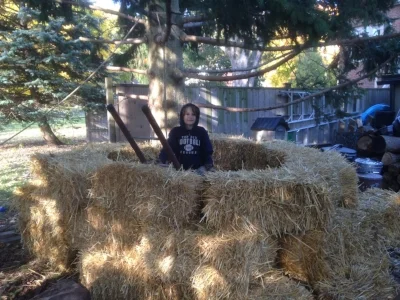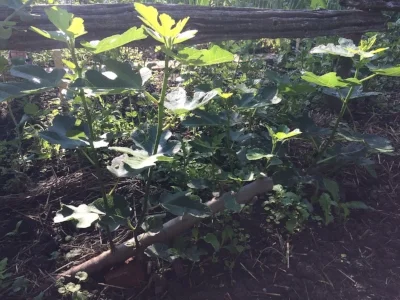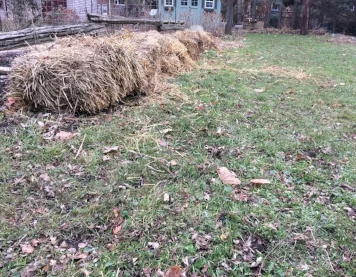Step-Over Figs
I order straw bales for my kids to play with—they're like giant biodegradable Lego blocks. They all become mulch eventually!
By Steven Biggs
Straw for Kids and Figs
I USE LOTS OF STRAW in the garden. Last spring we got 30 bales. When I say we, I mean the kids and me. For the first while, the bales are all for play: giant biodegradable building blocks!
Over the summer, some of the bales break as the twine comes off. I use the loose straw for mulching.
Step-Over Figs
In October, I lay full bales over top of fig plants that I'm growing as "step-over" figs. These plants have low, horizontal main stems.
I cut all of the branches from the main stem in the fall, making it easy to lay straw bales over the top.
With the step-over system, I select varieties that produce a good crop of "main crop" figs. These are the figs that grow on branches from the current season. New shoots can produce figs in one season.
The Challenge in my Garden
A step-over fig with a low, horizontal trunk that is easy to mulch and protect for winter.
Under the straw bales: Step-Over figs that are tucked in for the winter.
So far so good, right? Sort of. The concept is sound—and the straw does a great job of protecting my fig plants.
But...this corner of my garden is low and the soil is slow to warm up in the spring. The result is that my step-over fig plants don't start growing early enough to ripen many figs.
Lesson learned. I've started step-over fig plants in a warmer spot close to my patio.
And the solution for the step-over figs in these photos? Growing figs in cold climates often requires some sort of season-extending technique... And I think that the solution for me might be to install a low hoop-house over top of these figs in the spring. It will warm up the soil and get the plants out of dormancy sooner.



